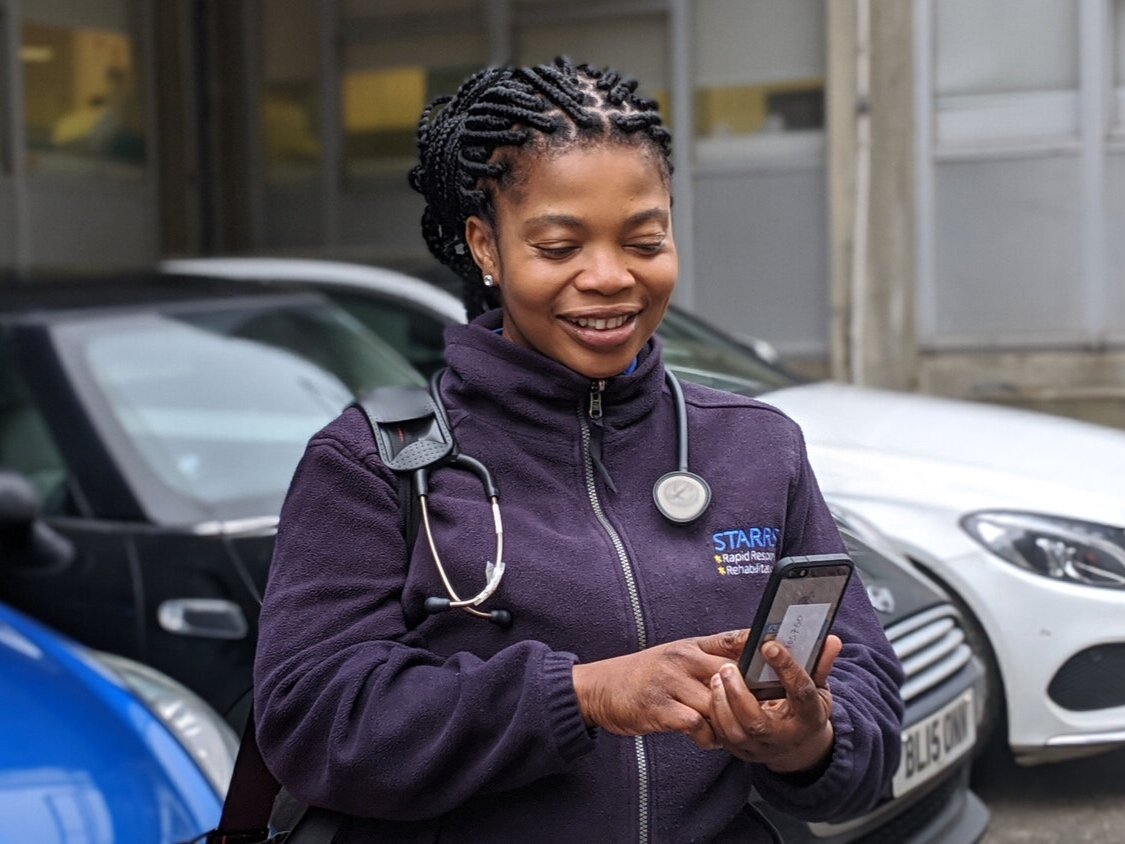What are virtual wards?
In 2021, NHS England announced a £160M funding boost to help the NHS recover from COVID-19 and reduce waiting lists. The money will be split between 12 ‘elective accelerators’ which will implement and evaluate innovations to increase the number of elective surgeries carried out in the coming months. Patients will benefit from trials of “Virtual Wards” amongst other initiatives.
Technology-enabled multidisciplinary care
A Virtual Ward is a technology-enabled way to provide support to patients without them needing to stay in hospital. Vulnerable patients, often with complex needs, receive care in their homes - either after discharge, as a way to avoid hospital admission, or to monitor their condition.
Multidisciplinary healthcare teams coordinate care for patients on a Virtual Ward with both community and hospital teams, ensuring that patients receive targeted specialist care and continue treatment, for example intravenous medication or physiotherapy. Patients on a Virtual Ward may also submit health readings remotely for monitoring by health and care professionals in another location.
Reducing bed-blocking
Creative ways of providing care services, like virtual wards, can facilitate hospital discharge and free up hospital beds. With a virtual ward, more patients can be admitted for treatment including surgery, whilst those discharged to their homes can recover safely.
Delayed hospital discharge ultimately leads to bed-blocking which is a £550 per minute (and growing) problem. Investing in ways to help discharge patients in a timely manner, or in the case of virtual wards, so that treatment can be continued in the patients’ homes, will help reduce the number of patients who have already waited more than a year for treatment.
Reducing the backlog - and beyond
The idea of a virtual ward is not new to the NHS and has been used to support unwell and deteriorating patients stay at home rather than come into hospital, as well as to discharge patients sooner. County Durham and Darlington NHS Foundation Trust is one example of a trust that has trialled virtual wards for vulnerable patients, whilst NHS Tees Valley Clinical Commissioning Group has been running virtual wards where COVID-19 patients are discharged home and submit blood oxygen readings from an app for clinicians to monitor remotely.
London North West University Healthcare NHS Trust also has a well-established early supported discharge and rapid-response service which aligns with the virtual ward concept, and sees over 9,000 patients each year that would otherwise likely be in hospital. Infinity is being used by the entire team to manage their virtual ward caseload effectively, collaborate, and share critical patient information in real-time.
Technology for a virtual ward
A multidisciplinary service
The idea of virtual wards is a relatively simple one, but the logistics of sending out clinicians to people’s homes, remote monitoring, coordinating the different specialists that are required for recovery and rehabilitation, and liaising with others that may be involved (for example: GPs, community care teams, district nurses, mental health services, social care, the patient and their family) is a complex task.
Practically, for virtual wards to work, NHS organisations need access to remote monitoring equipment, virtual consultation technology, reliable internet connections to connect to it, appropriate staff to carry out home visits when necessary, and a patient record system.
Digital caseload management
Across this should be a digital task management system – like Infinity – that can be accessed by all the necessary multidisciplinary health and care staff from anywhere. This combination would ensure that staff can efficiently and safely manage their virtual ward caseload, share information and collaborate with other disciplines or services easily. Connecting the whole team virtually enables full visibility of operational and clinical tasks, which in turn allows senior staff to support junior staff in real-time, helping to minimise stress and overload. Virtual ward rounds can be conducted with all the information in one place and decisions can be made about treatment and resource management in real-time.
Staff shortages are an issue and could be a limiting factor to setting up virtual wards, but with the addition of a task management solution in addition to the other resources, staff can work more efficiently and save time. This can make a huge difference - whether that’s seeing more patients in a day, spending more time with individual patients, or being able to manage larger caseloads across virtual wards safely and effectively.
It is clear that the approach of virtual wards – for both surgical and non-surgical patients – is a step in the right direction for a future NHS that is sustainable. In the medium-term, virtual wards will also be an important contributor to getting the NHS back on its feet after the pandemic, enabling it to provide treatment to the many patients that are waiting as a result of the backlog.
Appropriate digital tools are a key part of the NHS’s future, and Infinity is perfectly positioned to meet the its virtual ward task management needs for the future.






